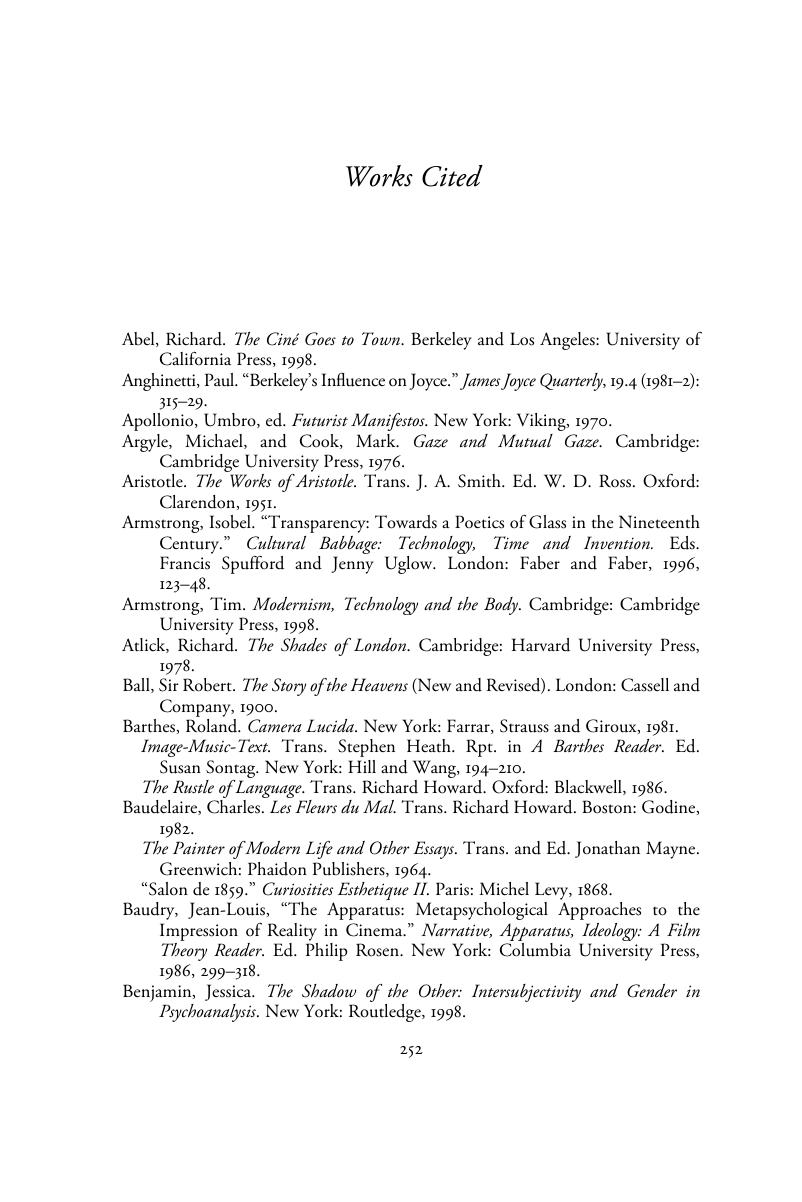Book contents
- Ulysses, Film and Visual Culture
- Ulysses, Film and Visual Culture
- Copyright page
- Dedication
- Contents
- Figures
- Acknowledgments
- Abbreviations
- Introduction Joyce’s Spectacles
- Chapter 1 Ineluctable Visuality
- Chapter 2 “Caught in This Burning Scene”
- Chapter 3 Snapshots from the Pavement
- Chapter 4 Painting Motion
- Chapter 5 “Alone in the Hiding Twilight”
- Chapter 6 Mirages in the Lamp Glow: “Circe” and Méliès’s Dream Cinema
- Chapter 7 Vision Conjoined
- Works Cited
- Index
- References
Works Cited
Published online by Cambridge University Press: 10 September 2018
- Ulysses, Film and Visual Culture
- Ulysses, Film and Visual Culture
- Copyright page
- Dedication
- Contents
- Figures
- Acknowledgments
- Abbreviations
- Introduction Joyce’s Spectacles
- Chapter 1 Ineluctable Visuality
- Chapter 2 “Caught in This Burning Scene”
- Chapter 3 Snapshots from the Pavement
- Chapter 4 Painting Motion
- Chapter 5 “Alone in the Hiding Twilight”
- Chapter 6 Mirages in the Lamp Glow: “Circe” and Méliès’s Dream Cinema
- Chapter 7 Vision Conjoined
- Works Cited
- Index
- References
Summary

- Type
- Chapter
- Information
- Ulysses, Film and Visual Culture , pp. 252 - 262Publisher: Cambridge University PressPrint publication year: 2018



